MAA-Michigan MichMATYC Spring Meeting: May 7-8, 2010
Contributing Speakers
Call for Papers
The deadline for abstracts was March 1, 2010.
Abstracts received after the March 1 deadline will be considered as space permits.
Undergraduate abstracts may be submitted until March 26.
Abstracts received after the March 1 deadline will be considered as space permits.
Undergraduate abstracts may be submitted until March 26.
Feryal Alayont - Grand Valley State University
"Using Pre-class Activities To Prepare Students For Class"
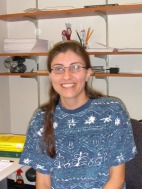
While it is common in social disciplines to assign students reading before class, you may have found that students do not get much out of reading mathematics before class unless you spend a significant effort to ensure that they do their reading correctly. For this reason, I started using pre-class activities in place of, or in addition to, reading to help students prepare for class. These activities are inspired by the "Preview Activities" from Mathematical Reasoning: Writing and Proof by Ted A. Sundstrom. They serve many purposes. They can help students remember a prerequisite mathematical concept, can contain the time consuming part of an in-class activity, can introduce the lecture material in a simpler context, etc. This talk will focus on how I use these activities in various classes with specific examples.
Mahmoud Almanassra - University of Wisconsin-Marinette
"Estimation of Survival and Cumulative-Hazard Functions of Restricted Quality Adjusted Lifetime"

Studying the quality adjusted lifetime has received much attention in the recent days because of its ability to take into consideration both the quantity and the quality of the patient's life. In this paper, we will propose a class of consistent, monotonic, and efficient estimators for the survival function of the quality adjusted lifetime. Also, we will propose another class of estimators for the cumulative hazard function of the restricted quality-adjusted lifetime.
K. “Bala” Balachandran - Kalamazoo Valley Community College
"Solar Irradiance"
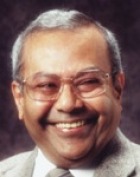
Solar radiation received at ground level anywhere on Earth depends on the time of day, the latitude, and of course the absorption and scattering by the column of air above the ground. It seems to be a good idea to introduce students to the vast amount of solar radiation we receive daily to the total energy usage of the World and particularly the U.S. Data gathered and published by the Department of Energy is presented together with a simplified integration procedure to compute the irradiance in Ypsilanti, MI using spherical polar coordinates. This would be a good exercise in Calculus and Engineering Physics classes and serves to introduce students to the abundance of Solar Energy on Earth. In addition to a description of the mathematical problem, the talk would be complemented by a demonstration of solar cooking (weather permitting – omelettes and pancakes are the most convenient).
Tanima Banerjee and Tanweer Shapla - Eastern Michigan University
“Inferences using Bootstrapping Procedure”
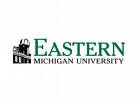
Bootstrapping, also known as resampling, is a computationally extensive method for estimating standard error of an estimate whose sampling distribution is not known explicitly. Bootstrapping has become very popular in recent years following Efron (1979) and has its increased dimension in multiple discipline for enabling standard error of estimates, constructing confidence intervals and testing hypothesis which otherwise become very difficult.
This talk provides a naïve approach to the introduction of the bootstrap with a particular attention to the construction of confidence interval estimates using percentile and bootstrap-t methods.
This talk provides a naïve approach to the introduction of the bootstrap with a particular attention to the construction of confidence interval estimates using percentile and bootstrap-t methods.
Barbara Britton and Bette Warren - Eastern Michigan University
"David Eugene Smith – Trailblazer with (Michigan State) Normal Connections"
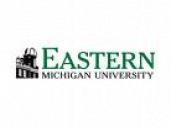
David Eugene Smith, fifth president of the MAA, was a well-known mathematician in the early 20th Century. He was a pioneer in the fields of history of mathematics and preparation of teachers, and worked to establish mathematics education as a separate field of study. Prior to becoming the chair of mathematics at Columbia Teachers’ College, Dr. Smith served as the first head of the department of mathematics at Michigan State Normal School in Ypsilanti – the early incarnation of what would eventually become Eastern Michigan University. This talk will describe Dr. Smith’s 1891-1898 tenure at MSNS in the context of teacher training in that era, and will discuss his 1900 book The Teaching of Elementary Mathematics (a pioneering handbook for teachers) and two of his many published textbooks in comparison to modern practices in mathematics education.
Ron Carlson – Eastern Michigan University
“Engaging Students with Real Data”
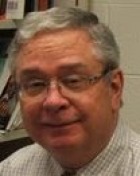
Challenge your students with real data and technology. This session will generate data that can be modeled with a step function. The data is collected with a TI-Nspire and a CBR2. The calculator and CBR2 will collect and display the data in graphical or table form. Four or five volunteers will be needed to stand and move to create the data. The students analyze the data, discover a function that models the data and explore the effects of several of the variables. This example also provides an opportunity to explore multiple representations (data, function and the experiment) of the concepts.
Fatih Celiker- Wayne State University
"Locking-free Optimal Discontinuous Galerkin Methods For A Naghdi-type Arch Model"
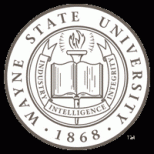
We introduce and analyze discontinuous Galerkin methods for a Naghdi
type arch model. We prove that, when the numerical traces are properly
chosen, the methods display optimal convergence uniformly with respect
to the thickness of the arch. These methods are thus free from
membrane and shear locking. We also prove that, when polynomials of
degree $k$ are used, {\em all} the numerical traces superconverge with
a rate of order $h^{2k+1}$. We exploit this superconvergence to
post-process the DG solution in an element-by-element fashion to
obtain a new approximation which converges much faster than the
original one. Numerical experiments verifying the above-mentioned
theoretical results are displayed.
type arch model. We prove that, when the numerical traces are properly
chosen, the methods display optimal convergence uniformly with respect
to the thickness of the arch. These methods are thus free from
membrane and shear locking. We also prove that, when polynomials of
degree $k$ are used, {\em all} the numerical traces superconverge with
a rate of order $h^{2k+1}$. We exploit this superconvergence to
post-process the DG solution in an element-by-element fashion to
obtain a new approximation which converges much faster than the
original one. Numerical experiments verifying the above-mentioned
theoretical results are displayed.
Michael Corral - Schoolcraft College
"Free/Open-Source Software in Mathematics"
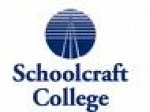
Free/Open-Source Software (F/OSS) has taken the world by storm. Mathematical software such as R, Gnuplot, Octave, Sage, Maxima, and other F/OSS are making inroads against closed-source, commercial software such as SPSS, Mathematica, Maple, and Matlab. This presentation discusses how R was used in an elementary statistics course at Schoolcraft College, in addition to using Gnuplot and Octave in trigonometry and calculus courses. When to use any software - F/OSS or otherwise - in teaching mathematics will also be discussed.
Olivier Heubo-Kwegna - Saginaw Valley State University
"Kronecker Function Rings And Generalizations"
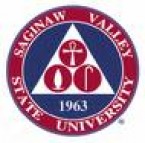
In order to generalize the notion of a Kronecker function ring, Krull introduced the notion of e.a.b. (endlich arithmetisch brauchbar) star operations in 1936. Two generalizations of the concept of Kronecker function rings were proposed in 2001: one by F. Halter-Koch, and the other one by M. Fontana and K.A. Loper. Halter-Koch's construction starts from an axiomatization of two properties of the classical Kronecker function ring, whilst the Fontana - Loper approach uses semistar operations. A notion of a projective star operation is introduced and related to the classical star operations. We show that the projective Kronecker function ring built from the projective star operation is an example of Halter-Koch's generalization of Kronecker function ring.
Khairul Islam - University of Michigan - Ann Arbor
"R-facilitated Teaching: t -Tests and Related Basics"

t-test is an important topic from elementary to the higher level of mathematical sciences and statistics classes. It has widely been used in almost every branch of educational and scientific research. However, several assumptions need to be satisfied for any inference using t-test to be valid for an effective decision making. Therefore, it is imperative that we address these issues while teaching, and students should be aware of the necessity of verifying such issues while learning through practice. This talk is intended to address different versions of t tests and related basics which should be followed while making an inference using t tests. Particular attention is paid on using a freely accessible statistical software R in achieving all these goals.
"On Standard Effect Measures of Assessing Risk for a Cohort Study"
Assessing risk of a factor is an important topic in biostatistics and epidemiology. Several standard effect measures such as relative risk, odds ratio, risk difference and various versions of attributable risks are widely used measures for assessing the risk of an exposure to the development of the disease or an outcome of interest. Because attributable risk takes into account the actual prevalence of exposure in the population, they are preferable to others while comparing epidemiological importance of several factors varying both in their relative risks and prevalences. Recently proposed impact numbers are an addition to the list to some extent. While attributable risk measures the proportion of disease that could be eliminated by completely eliminating the exposure from the population of interest, impact numbers reflect the number among whom one outcome is attributable to the exposure of the risk factor specific to a population. This talk is intended to address an overview of various measures in use for a cohort study and compare the interpretational aspects using real life examples. In particular, an attention is paid in the computational aspects of interval estimates of impact numbers in relation to the other measures of risk factor.
"On Standard Effect Measures of Assessing Risk for a Cohort Study"
Assessing risk of a factor is an important topic in biostatistics and epidemiology. Several standard effect measures such as relative risk, odds ratio, risk difference and various versions of attributable risks are widely used measures for assessing the risk of an exposure to the development of the disease or an outcome of interest. Because attributable risk takes into account the actual prevalence of exposure in the population, they are preferable to others while comparing epidemiological importance of several factors varying both in their relative risks and prevalences. Recently proposed impact numbers are an addition to the list to some extent. While attributable risk measures the proportion of disease that could be eliminated by completely eliminating the exposure from the population of interest, impact numbers reflect the number among whom one outcome is attributable to the exposure of the risk factor specific to a population. This talk is intended to address an overview of various measures in use for a cohort study and compare the interpretational aspects using real life examples. In particular, an attention is paid in the computational aspects of interval estimates of impact numbers in relation to the other measures of risk factor.
Ray Jensen - Lake Superior State University
"How To Teach Set Algebra Using Truth Tables"
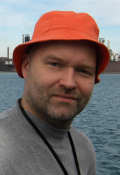
In this presentation, a method is shown which integrates the truth table with proving theorems in set algebra. This technique has the advantage of allowing the student or researcher to use a more systematic approach to proof. Further, the technique can be used to inegate hypotheses and locate exactly where problems arise. The technique was used in an introductory class on theoretical mathematics in the Fall of 2009 at Lake Superior State University, and was well-received by the students in the class.
Michael A. Jones - Mathematical Reviews
A New Look at the New States Paradox: Apportionment in the Democratic Primary

In the Democratic Presidential Primary, the Democratic Party uses Hamilton’s method to apportion delegates to candidates based on the portion of the population each candidate receives after all votes for candidates receiving less than 15% of the popular vote are eliminated. The 15% cutoff results in a paradox: A candidate with more than 15% of the popular vote could receive more delegates after the votes are eliminated than if no cutoff were used! This is an example, in reverse, of the New States Paradox: when the addition of a new state results in an old state receiving an additional representative in the US House of Representatives despite the populations of the other states and the number of representatives in the House remain the same. Geometry will be used to explain the paradox and why such a cutoff paradox would not occur if the Democratic Party used a divisor method to apportion delegates. The Democratic Delegate Selection Rules, Hamilton’s method, and divisor methods will be reviewed.
Ryan Jones - Western Michigan University
"Cents and Sensitivity"
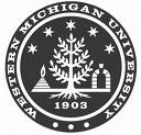
The squares of an m × n checkerboard are alternately colored black and red. It is possible to place coins (pennies) on some of the squares of the checkerboard (at most one coin per square) such that for every square of one of the colors the number of coins on neighboring squares is odd, while for every square of the other color the number of coins on neighboring squares is even. A placement of coins that accomplishes this is called a solution of the checkerboard. Some checkerboards are color-sensitive in the “sense” that specifying whether the number of coins on neighboring squares is even or odd depends on which squares of the checkerboard are which color. We discuss the problem of determining which checkerboards are color-sensitive.
Jeff Kallenbach - Siena Heights University
“Maple Computer Algebra System Through the Undergraduate Curriculum”
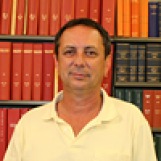
The Maple© Computer Algebra System, provided by Maplesoft, Inc. of Waterloo, Ontario, is a rich, mature package for symbolic and numerical mathematics. It provides the power, affordability, and usability to enrich the undergraduate curriculum from Calculus I up through senior-level courses. It can be used at a variety of levels of complexity depending on the difficulty of the material and maturity of the student. This presentation covers a survey of how the faculty at Siena Heights University make use of Maple in explorations, analysis, and supplementary activities from freshman year through graduation.
Thomas Kelley - Henry Ford Community College
“Some Math from the Engineer’s Point of View”
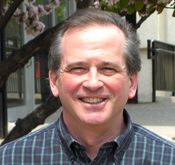
As part of my sabbatical in the fall term of 2009 I attended two engineering courses at Oklahoma State University as a guest of the departments of Chemical and Electrical Engineering. One course was titled “Introduction to Engineering Mathematics” and used engineering labs to illustrate and preview various topics in mathematics. The course itself was taught by a team of teachers and made extensive use of web based materials. I’ll first talk about the course’s overall structure and then I will give a short description of the labs and how they were used to present mathematical topics such as algebra, trigonometry, linear algebra, sinusoids, derivatives, and integrals.
Michael "Cap" Khoury - University of Michigan-Ann Arbor
"Counting Occurrences of Given Curvatures in Apollonian Circle Packings"

To construct an Apollonian Circle Packing (ACP), we begin with four pairwise-tangent circles and successively inscribe circles in each of the lunes formed, resulting in an aesthetically-pleasing configuration of countably many circles. Remarkably, if the starting four circles all have integral curvatures, then so will all the circles in the packing. These packings have attracted significant attention in recent years; number theorists are particularly interested in understanding which curvatures appear. There are numerous open questions along these lines. (One typically works in the standard integers, but all the ideas make sense more generally---in particular, we can take packings of circles with curvatures in the ring of integers of some number field.) Here we will take as our starting point two basic questions: 1) Given an integer, how many times does a circle with that curvature appear in an integral ACP? 2) Given a pair of integers, how many times do tangent circles with those curvatures appear in an integral ACP? We will answer these questions over Z and make some comparisons to the situation for packings in other number rings.
Yangjin Kim - University of Michigan - Dearborn
"Glioma Invasion and Microenvironment : A Mathematical Model"
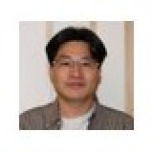
Tumor proliferation and migration depends on its microenvironment. We analyze the migration patterns of glioma cells (brain cancer cells) from the main tumor, and show that the various patterns observed in experiments can be obtained by a model's simulations, by choosing appropriate values for some of the parameters (chemotaxis, haptotaxis, and adhesion) of the PDE model. A multiscale model may be presented for better understanding of the interaction between a tumor and its environment at the cellular level.
*This is joint work with Avner Friedman (MBI), Sean Lawler, Michal O.Nowicki and E. Antonio Chiocca (Oncological Neurosurgery) at the Ohio State University.
*This is joint work with Avner Friedman (MBI), Sean Lawler, Michal O.Nowicki and E. Antonio Chiocca (Oncological Neurosurgery) at the Ohio State University.
Kyle Kolasinski - Western Michigan University
"Modular Edge-Graceful Graphs"
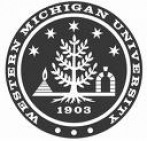
In an edge-graceful labeling of a graph G of order n and size m, distinct edges of G are assigned distinct labels of the set {1, 2, . . . ,m} in such a way that for every two distinct vertices of G the sums of the labels of their incident edges are distinct in Zn. A graph that admits an edge-graceful labeling is called edge-graceful. If m > n, then this edge labeling is not actually a bijective labeling. This suggests removing altogether the requirement that the edge labeling be bijective. We study such modular edge-graceful labelings and resulting modular edge-graceful graphs, primarily concentrating on which graphs are modular edge-graceful.
Brian J. McCartin - Kettering University
"Oblique Linear Least Squares Approximation*"
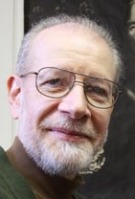
The concept of oblique linear least squares approximation is introduced. This permits a unified treatment of the various modes of linear regression: coordinate regression, orthogonal regression, (l)-regression and (l, µ)-regression. This new concept is then given a geometric interpretation in terms of the concentration ellipse which is shown to provide a generalization of the Galton-Pearson-McCartin geometric characterizations of linear regression.
Chris Moseley - Calvin College
"Geometry of Control-Affine Systems"

Satellite three-axis control, inertial navigation systems, and NMR quantum computers are examples of control-affine systems: control systems in which the system is subject to an uncontrolled ``drift'' vector field. This is a much broader category of interest than control-linear systems, a class whose geometry is well understood. Recent investigations have shown that geometric invariants for control-affine systems of constant type appear in dimensions as low as three; by contrast, control-linear systems have no such invariants in dimensions lower than five. In this talk, I will explain recent results and some questions for future research. This is joint work with J. Clelland of Boulder and G. Wilkens of Hawaii.
Edmond Nadler - Eastern Michigan University
“Singularities of Parametric Cubic Bézier Curves”
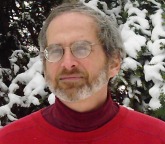
Parametric cubic polynomial curves are useful in applications, being of relatively low dimension, and yet, flexible in their shape. To use these curves one must fully understand the cases of singularity, i.e., where the speed of the parametric curves is zero.
In this talk, these singularities are described in terms of the Bézier form, a representation of parametric polynomial curves employing the Bernstein polynomials as basis functions, in which the coefficients have geometric significance. These Bézier curves, which are used extensively in computer graphics and related fields, were first developed in the 1950s in the French automobile industry.
This is joint work with Tae-wan Kim, Seoul National University, Korea
In this talk, these singularities are described in terms of the Bézier form, a representation of parametric polynomial curves employing the Bernstein polynomials as basis functions, in which the coefficients have geometric significance. These Bézier curves, which are used extensively in computer graphics and related fields, were first developed in the 1950s in the French automobile industry.
This is joint work with Tae-wan Kim, Seoul National University, Korea
Randall Pruim – Calvin College
"Can Sage Replace Maple and Mathematica?"
"What Should a Modern Mathematical Statistics Course Look Like?"
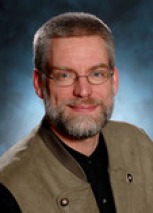
Can Sage replace Maple and Mathematica?
Sage (sagemath.org) is a free open-source mathematics software system licensed under the GPL. It combines the power of many existing open-source packages into a common Python-based interface. The designers of Sage claim that their mission is to create "a viable free open source alternative to Magma, Maple, Mathematica and Matlab". Have they succeeded? Are they on a trajectory to succeed? We'll present some examples of using Sage in undergraduate mathematics courses and discuss its viability compared to the "big boys".
What should a modern mathematical statistics course look like?
Over the past 10-15 years, there has been much discussion centered on a modern approach to introductory statistics. Many textbooks have been written that are data-centric and rely heavily on computers. But what should we do with our majors and other advanced students who want an introduction to probability and statistics? In particular, how should computation enter into this course? I'll present some examples from a statistics-centric approach to what used to be known as the probability and statistics sequence. This approach (a) uses the statistical package R throughout the course, (b) introduces hypothesis tests and p-values in the first week, and (c) covers important foundational topics in probability as they are motivated by statistics.
Sage (sagemath.org) is a free open-source mathematics software system licensed under the GPL. It combines the power of many existing open-source packages into a common Python-based interface. The designers of Sage claim that their mission is to create "a viable free open source alternative to Magma, Maple, Mathematica and Matlab". Have they succeeded? Are they on a trajectory to succeed? We'll present some examples of using Sage in undergraduate mathematics courses and discuss its viability compared to the "big boys".
What should a modern mathematical statistics course look like?
Over the past 10-15 years, there has been much discussion centered on a modern approach to introductory statistics. Many textbooks have been written that are data-centric and rely heavily on computers. But what should we do with our majors and other advanced students who want an introduction to probability and statistics? In particular, how should computation enter into this course? I'll present some examples from a statistics-centric approach to what used to be known as the probability and statistics sequence. This approach (a) uses the statistical package R throughout the course, (b) introduces hypothesis tests and p-values in the first week, and (c) covers important foundational topics in probability as they are motivated by statistics.
Jack Rotman - Lansing Community College
"New Life for Developmental Mathematics"

This session will present a brief summary of the AMATYC “New Life Project” for developmental mathematics – which will eventually lead to the old courses being replaced by mathematically-sound experiences that will directly help students succeed in college with a concurrent reduction in the number of courses that students must take.
This project has been active for over a year; we have two online communities related to the project; we have had a major symposium at the AMATYC conference (November 2009). Also, there are major grant projects that we are collaborating and coordinating with (Gates Foundation, Carnegie Foundation for the Advancement of Teaching). The Project has created a mission statement for developmental mathematics, a new pathway vision for developmental mathematics connecting to credit courses, and the outline of the two new courses.
This project has been active for over a year; we have two online communities related to the project; we have had a major symposium at the AMATYC conference (November 2009). Also, there are major grant projects that we are collaborating and coordinating with (Gates Foundation, Carnegie Foundation for the Advancement of Teaching). The Project has created a mission statement for developmental mathematics, a new pathway vision for developmental mathematics connecting to credit courses, and the outline of the two new courses.
Tanweer Shapla - Eastern Michigan University
"On the Assessment of Traditional and Hybrid Models of Teaching of Elementary Statistics"
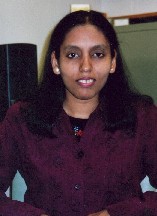
In recent years, a significant number of studies have been conducted to compare students’ performance in traditional (face-to-face) and hybrid (blend of online and face-to-face) models of elementary statistics class. In order to compare students’ mastery, traditional and hybrid versions of statistics classes were offered where the course was taught by the same instructor, same topics were covered and similar tests were given. At the end of the semester, it was found that there was no significant difference in students’ performance between the two teaching formats, which is supported by previous research results.